Exactly a century since Thanh Nien newspaper - the mouthpiece of the Vietnam Revolutionary Youth Association founded by leader Nguyen Ai Quoc - published its first issue on June 21, 1925, the Vietnamese revolutionary press has played an important role in the history of the nation.
At the National Scientific Conference "100 years of Vietnamese Revolutionary Press and Media accompanying the glorious cause of the Party and the nation," Mr. Tran Cam Tu, Politburo member, Standing member of the Secretariat emphasized:
“Over 100 years of construction and development, the Vietnamese Revolutionary Press and Media has made strong strides in terms of quantity, quality, programs, and publication content, and has initially mastered modern media technology. Many Press and Media agencies have developed into multimedia Press and Media agencies on par with the region and the world . The team of journalists is increasingly strong, steadfast in political will, good at professional skills, exemplary in professional ethics, and performing well in social responsibilities."
Faced with the digital age that is taking place extensively in all areas of socio-economic life, the Press and Media want to fulfill the glorious mission of the past hundred years, especially in the context of our country entering a new era - the era of national development, forcing the Press and Media to not be able to stand outside the wave of technology, under the enormous impact of artificial intelligence (AI), big data, social networks and cross-border platforms.
In that context, digital transformation in Journalism and Media is no longer an option, but a mandatory requirement to ensure survival and development.
In this article, the author focuses on analyzing the inevitable need for digital transformation of Vietnamese Press and Media in general, to strategic actions from the perspective of Voice of Vietnam - the first media agency established right after the founding of the country, founded by President Ho Chi Minh, and from there proposes solutions and strategies to contribute to building a professional, modern Press and Media force with the capacity to integrate and serve the Fatherland.
Digital Transformation of Journalism and Media: An Inevitable Trend in the Digital Age
In today's era, digital transformation in Journalism and Media is not only a topical topic, but a vital imperative to maintain its leading role and orienting public opinion.
In the context of rapid development of technology, especially artificial intelligence (AI), big data, social networks and cross-border platforms, digital transformation is no longer a long-term strategic choice - but has become an immediate condition for all Press and Media agencies if they want to survive, develop and fulfill their missions.
The world's press and media are witnessing a dual revolution: having to adapt to the rapidly changing content consumption behavior of the public, while also having to protect authenticity and core values in the midst of an extremely chaotic and difficult-to-control "sea of information" on cyberspace.
This has posed a complex problem: how to modernize the journalism process while maintaining the ideological orientation, ethical values and social responsibility of the Press and Media.
In Vietnam, the explosion of digital platforms and social networks, cross-border infrastructures such as Facebook, YouTube, TikTok... have fundamentally changed the public's information reception behavior.
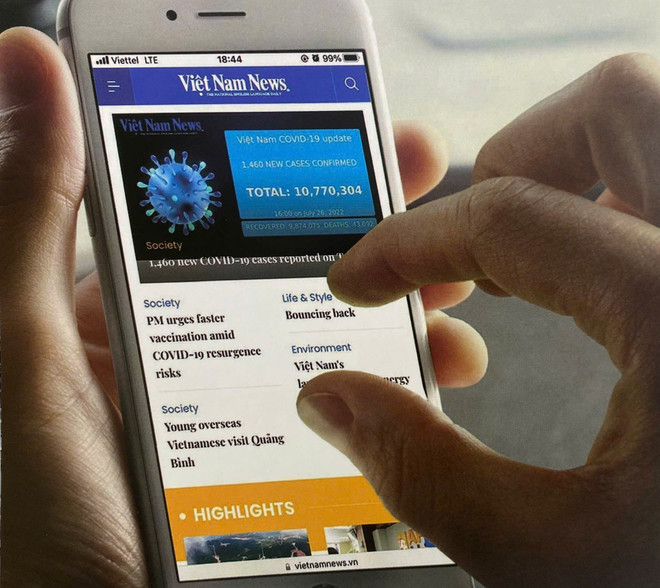
According to the Global Digital 2024 Report published through a collaboration between We Are Social and Meltwater, social media users reached 5 billion people, while in Vietnam, the number of Internet users reached more than 78 million people (accounting for nearly 80% of the population), with an average time spent on social media of up to 2 hours and 37 minutes/day, of which more than 92% of users access via mobile devices, with a tendency to receive short, fast and personalized content as suggested by AI.
In that context, traditional Press and Media, if it only stops at print, radio, television or online newspapers, will find it difficult to retain the public. The bigger challenge is the ability to maintain a central role in the media space, which is increasingly fragmented by competition from digital platforms and unverified information flows.
Digital transformation of Journalism and Media therefore cannot be simply understood as “moving from paper to the web,” or “having more social media accounts,” but rather a comprehensive restructuring process, from the editorial organization model, the content production and distribution process, having a strategy for content production and management of reporters and editors to the financial model of Journalism and Media in the digital environment. It is a transformation from within - requiring both thinking and technology.
Vietnamese revolutionary press from birth to digital transformation turning point
Over the past 100 years, the Revolutionary Press has always accompanied the nation, closely associated with the country's historical milestones:
June 21, 1925: the milestone of the birth of the Vietnamese revolutionary press, which both propagated Marxism-Leninism and enlightened the people about patriotism and the revolutionary path.
Period 1930-1945: Press and Media were associated with the revolutionary movement. After the birth of the Communist Party of Vietnam (1930), many newspapers were published such as: Struggle, Advance, Liberation, Liberation Flag (of the Viet Minh Front). Press and Media during this period were effective propaganda weapons in the revolutionary movement, the struggle for power.
Period 1945-1954: After the August Revolution, the Democratic Republic of Vietnam was established, the Press and Media entered a new period. Right after the 5th anniversary of the founding of the country, on September 7, 1945, the Voice of Vietnam was born, then in turn the Vietnam News Agency, along with the newspapers Su That, Quan Doi Nhan Dan,... reflecting the reality of the resistance war, encouraging the spirit of the whole people to fight the enemy, serving the resistance war against the French.
Period 1954-1975: Press and Media served the cause of building socialism in the North and the struggle for national liberation in the South.
Period 1975-1986: After April 30, 1975, the Press and Media reflected the work of overcoming the consequences of war, protecting the Fatherland and building the country.
Period 1986-2000: Innovation of Press and Media along with innovation of the country, from the 6th Congress (1986) of the Party, the comprehensive innovation was initiated, Press and Media quickly innovated content, form, and style of expression, a series of new Press and Media agencies were born; daily, weekly, and special newspaper genres... developed strongly.
2000-2010 period: The country entered the modernization period, electronic newspapers were born, opening the way for Multimedia Press and Communication. Press and Communication play an increasingly important role in orienting public opinion and fighting negativity, building and protecting the Fatherland.
2010-2020 period: Digital Press-Media-Multi-platform Media was born, the explosion of the Internet and social networks created challenges and required Press-Media to have a strong transformation. Press-Media approached the multimedia model, converged newsrooms, applied AI, analyzed user data.
Phase 2020-2025: Digital transformation of Press and Media is an inevitable and strategic requirement. The Prime Minister issued the Press and Media Development Strategy to 2025, followed by the Press and Media Digital Transformation Strategy to 2025, with a vision to 2030. Revolutionary press continues to play a role in orienting information, fighting against false arguments, and at the same time competing with social networks and cross-border platforms.
2025: Celebrating 100 years of Revolutionary Journalism, marking 100 years of formation and development, gradually restructuring comprehensively on a digital platform, towards a professional, humane and modern Journalism-Media.
Entering the 21st century, with the development of technology, especially social networks, big data and artificial intelligence (AI), the leading role of mainstream journalism and media is being fragmented, even threatened by unverified sources, sensational content and fake information.
This is a completely different context: If in the past, the public sought out the Press and Media to know the truth, today, the truth must seek the public among countless "noise" and "interference." When "everyone makes news, every household shares," the role of the Press and Media is not only to inform, but also to verify, guide, and create social trust. And to do that, the Press and Media cannot use old tools in a new game - but must undergo comprehensive digital transformation.
The concept of "digital transformation of Journalism and Communication" therefore needs to be understood more deeply. It is not a technical or technological investment project but a reshaping of the mission of Journalism and Communication in the digital age.
If 100 years ago, revolutionary Press and Media were born to spread the ideal of independence, today the official Press and Media must continue to uphold the ideal of protecting the Party's foundation, serving the Fatherland, and meeting the people's needs in a multi-dimensional, risky and competitive information environment.
International practice shows that even large stations such as BBC (UK), NHK (Japan), NPR (USA), or KBS (Korea)... to fulfill their missions, they have also transformed strongly with integrated digital platforms - from online TV, podcasts, personalized vodcasts, to AI applications in analyzing trends and public behavior. Those agencies that do not innovate in time - or innovate half-heartedly - have witnessed a significant decline in public opinion, reputation and revenue.
In recent years, Vietnamese Press and Media has made remarkable steps in digital transformation, especially in major Central Press and Media agencies.
However, this shift is still uneven, lacking in synchronization and is largely a “technical response” rather than a strategic restructuring. This has caused the mainstream Press and Media to somewhat move away from its central position in the modern media space.
According to the report from the Ministry of Information and Communications, the Central Propaganda Department, and the Journalists Association, by the end of 2024, out of a total of 884 Press and Media agencies (812 newspapers & magazines, 72 radio and television stations), about 40% of Press and Media agencies have put content on the Internet, while according to the Digital Transformation Strategy of Press and Media to 2025, with a vision to 2030 (Decision 348/QD-TTg, signed on April 6, 2023), we strive to have 70% of Press and Media agencies put content on digital platforms by the end of 2025 and 100% of Press and Media agencies complete digital transformation by 2030.
In that situation and context, Vietnamese Press and Media needs a real turning point - a "revolution within the revolution" - to maintain its position as a force leading ideology, criticizing policies and connecting the community. That turning point can only be initiated by a comprehensive, in-depth and systematic digital transformation strategy - from central to local levels, from organizational models to people, from digital technology to digital culture.
Perspective from Voice of Vietnam
As the main media agency of the country, Voice of Vietnam has been present since the early days of the Democratic Republic of Vietnam. Established on September 7, 1945, just 5 days after the Declaration of Independence, Voice of Vietnam is not only the official voice of the Party and Government but also a symbol of the aspiration for independence, freedom and peace of the entire nation.
During the two great wars of national defense, the Voice of Vietnam played a particularly important role, as the "information link" between the frontline and the rear, between the revolutionary leaders and the people and soldiers of the whole country, and peace-loving people around the world.
News broadcast from the jungles of the war zone, from the heart of the tunnels or from the middle of the occupied city fueled the patriotic spirit and forged the determination to fight and win of our Party and people.
Entering the Renovation period, the Voice of Vietnam continues to affirm its irreplaceable position on the ideological-cultural front. With a multi-channel broadcasting system, covering the whole country and many key areas in the world by SW, AM, FM waves, with a network of reporters spread across the country and many countries in the world, the Station has constantly innovated its content and transmission methods, while maintaining the orientation, accuracy and humanity of revolutionary journalism.
Today, in the context of multi-platform communication and strong digital transformation, Voice of Vietnam has become a multimedia - multi-lingual - media agency broadcasting and distributing content on multiple platforms: radio, electronic newspapers, print newspapers and social networks, serving millions of listeners and viewers at home and abroad. Not only playing a core role in propaganda work, Voice of Vietnam is also an "extended arm" of the Party and State in the process of building a digital society, digital citizens and digital economy.
In the overall picture of digital transformation of Vietnam Press and Media, Voice of Vietnam as well as other press agencies, there are difficulties within the Press and Media ecosystem, facing significant barriers:
Lack of investment capital: Especially for industry and local newspapers - there are no resources to build a digital platform, modern CMS or multimedia studio.
Lack of technology personnel: Most journalists still operate in the traditional way, lacking digital skills such as video editing, podcasting, data analysis or creating content for social networks.
Lack of a converged operating model: Most still follow a linear organization - print, radio, television, and electronic newspapers operate separately, lacking data sharing and content collaboration.
To overcome the above barriers, Voice of Vietnam has been approaching each step in a methodical, certain, decisive and strategic manner.
Not simply “applying technology,” Voice of Vietnam has been carrying out comprehensive digital transformation in terms of infrastructure, content, personnel and operating model, aiming to become an advanced and modern national digital media complex.
1. Infrastructure investment - Creating a technology platform for converged media Voice of Vietnam is one of the key national Press and Media agencies that proactively invests heavily in digital infrastructure systems, considering it an essential foundation for transformation.
From building an integrated production-broadcasting center for content distribution on digital platforms, to testing the application of DAB+ and DRM terrestrial digital broadcasting standards.
Voice of Vietnam not only modernizes its operational processes but also creates conditions to expand its coverage area, reducing dependence on traditional broadcasting production methods.
To achieve the above goal, Voice of Vietnam must restructure comprehensively and focus on digital public. Thus, digital transformation is no longer a matter of “upgrading the form”, but rather changing the nature of the Press-Media operating model.
Requirements are set forth:
- Reorganize the newsroom according to a convergence model: integrating editing, technology, digital media and user data. Build Oneman-style multimedia studios, apply big data and artificial intelligence to reduce dependence on technicians, create conditions for reporters and editors to express their ideas in creating journalistic works broadcast on multiple platforms.
-Build your own content distribution platform, not completely dependent on third parties (Facebook, Google).
- Developing data-driven journalism and multi-revenue models: commercial podcasts, moving towards content charging, brand collaboration...
- Apply AI, Big Data, Cloud Computing, Blockchain... to support production, analyze user behavior and protect authentic content.
- Build a data center, digitize and store historical documents from the country's founding to the present... to serve the common use of documents for all types.
- With the motto "each user is an information reception center", Voice of Vietnam is approaching the model of media personalization - a standard of major public stations in the world such as BBC Sounds (UK), NHK+ (Japan) or ABC Listen (Australia).
2. Training digital journalists - From "traditional journalism" to "integrated communication skills"
Voice of Vietnam not only invests in technology but also identifies people as the center of digital transformation.
The station has implemented a training model for “dual journalists” – reporters and editors who are not only good at Journalism and Communications, but also proficient in video editing, podcast production, data processing, live streaming on the spot and operating digital platforms.
For example:
- VOV Traffic reporters can work from the accident scene, transmit signals to the center, and livestream on TikTok.
- VOV5 foreign affairs channel produces podcast programs in many languages: English, Russian, French, Chinese, Japanese, Spanish... broadcast on digital platforms, spreading the image of Vietnam and its people to global audiences.
In addition to internal training, Voice of Vietnam also cooperates with many international organizations such as DW Akademie (Germany), ABU (Asia-Pacific Broadcasting Union), AIBD, CIRTEF... to update modern skills and standardize training according to the global Journalism-Media model.
3. Financial model innovation - Affirming independence and sustainability
Fully aware of the trend of declining revenue from traditional advertising, Voice of Vietnam has been implementing and testing many new Press-Media economic models:
- Targeted content: cooperate with state agencies and international organizations to produce columns on education, environment, smart cities...
- Commercial podcasts: develop topical podcast series, integrate brand advertising, or offer ad-free, paid versions.
- AI and data applications: training AI to imitate legendary voices at Voice of Vietnam such as artists Kim Cuc, Tuyet Mai, Trinh Thi Ngo...., translating from Vietnamese to foreign languages produced and broadcast by VOV5 channel, suggesting content based on user behavior - aiming to optimize experience and increase revenue from advertising by audience.
- The combination of data-content-technology-finance is helping Voice of Vietnam form a sustainable Press-Media economic ecosystem, gradually reducing dependence on the State budget, creating more opportunities to create quality content and more independence in the work of reporters and editors.
4. Voice of Vietnam - Accompanying in creating the national digital media ecosystem
Not only stopping at transforming to adapt to the digitalization trend, Voice of Vietnam clearly identifies its pioneering role in leading and creating a national digital media environment.
As the country's leading media agency, Voice of Vietnam has actively accompanied digital transformation programs launched by the Government, such as the National Digital Transformation Program to 2025, with a vision to 2030, or the National Press Development Strategy for the 2021-2030 period.

By producing high-quality content on multiple platforms, from traditional radio, online radio to mobile applications and podcast platforms, Voice of Vietnam is gradually building a comprehensive digital media ecosystem.
One of the clearest examples of this leading role was during the peak of the COVID-19 pandemic, when VOV became one of the official information channels, continuously updating 24/7 instructions from the Government, Ministry of Health, and National Steering Committee for Epidemic Prevention.
A series of special sections such as "The whole nation fights the epidemic", "Live healthy with you" or "Proud of the front line" are produced and broadcast synchronously on VOV1, VOV2, VOV Traffic, VOV LIVE platforms, helping people nationwide access information quickly, accurately and orient positive behavior during the crisis.
In addition, in other emergency situations such as the 2020 Central region storms and floods or large-scale vaccination campaigns, Voice of Vietnam has mobilized the entire technical system and personnel, from regional centers such as the Northwest, Northeast, Central Highlands, Central regions, Ho Chi Minh City... to provide timely information, support relief coordination, reflect local realities and connect the community.
Not only focusing on urban areas, Voice of Vietnam is one of the very few media agencies that maintains a nationwide radio network, with large-capacity broadcasting stations such as Tam Dao (Vinh Phuc), Phja Oac (Cao Bang), Ba Den (Tay Ninh) .... Thereby, ensuring information is transmitted to remote areas, borders, islands - places where the Internet is not yet truly popular.
The combination of traditional infrastructure and modern digital platforms such as VOV Media application, VOV LIVE platform, and VOV podcast system on Spotify, Apple Podcast... has helped the station expand coverage while improving interaction efficiency and personalizing content.
Looking back at the journey of a century of Vietnamese revolutionary journalism - from Thanh Nien newspaper founded in 1925 to today's multi-platform media groups - we can see a common thread throughout: The press is constantly innovating to serve the Fatherland, serve the people, and accompany the nation. Each stage of development is associated with a change in thinking, content and technology, to adapt to new circumstances and new tasks. And today, the next historical turning point of the Press-Media is digital transformation - a revolution that cannot be delayed.
Digital transformation of Journalism and Media is no longer a choice, but a condition for existence and development. In an era where every citizen can become an information “publisher”, mainstream Journalism and Media can only play a leading role if it masters technology, understands digital users, and redesigns the way it operates on the basis of data-creativity-responsibility.
From the current situation of the whole industry, it can be seen that many Press and Media agencies are still confused and lack of synchronization in their actions. However, pioneering models such as Voice of Vietnam, Vietnam Television, VNA, Nhan Dan Newspaper... have shown that: if there is a correct strategy, innovative thinking and methodical investment, the Press and Media will not only catch up with but also lead the trend of modern media.
The Voice of Vietnam - as the main national media agency - is proving that maintaining political and ideological identity does not conflict with technological innovation. On the contrary, professional courage, loyalty to the mission and the ability to master new technology are the decisive factors for the existence and spread of revolutionary journalism and media in the 21st century.
Digital transformation in Journalism and Media is not just an act of technical and technological innovation - but a strategic mindset, a way to reposition the role, responsibility and value of Journalism and Media in an open information society. Journalists today are no longer simply news reporters, but have become "trust builders," leading awareness, inspiring and connecting the community.
With the Voice of Vietnam - a pioneering bright spot, Vietnam's revolutionary press and media have a solid foundation to confidently enter a new stage of development: modernity - humanity - responsibility - creativity.
Looking forward from 100 heroic years, today's digital journey is the way for the Press and Media to continue writing revolutionary ideals in the language of the digital age - serving the Fatherland, accompanying the nation, spreading Vietnamese values to the world./.
Source: https://www.vietnamplus.vn/chuyen-doi-so-bao-chi-truyen-thong-xu-the-tat-yeu-trong-thoi-dai-so-post1045237.vnp












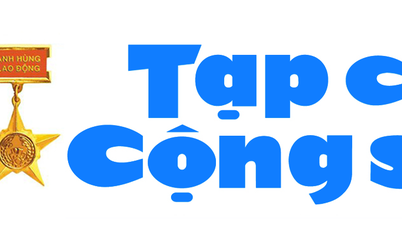










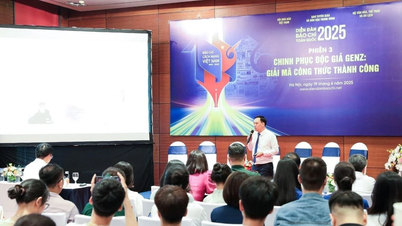


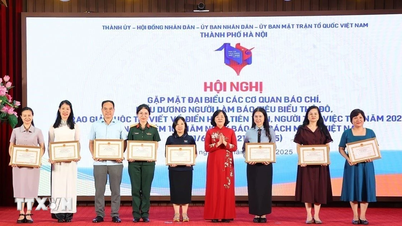
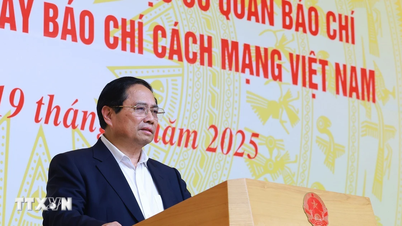




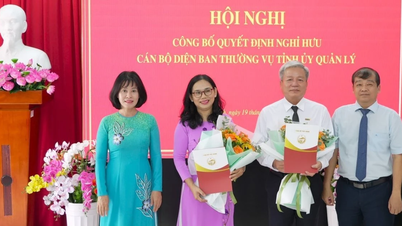
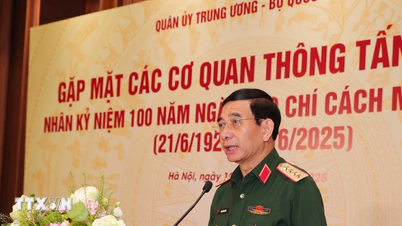
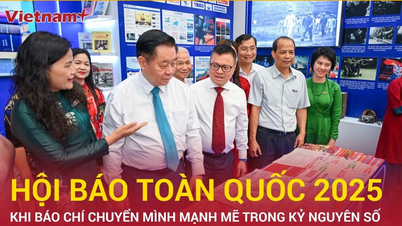

















































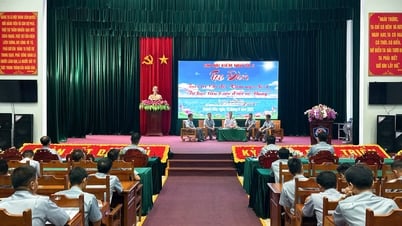





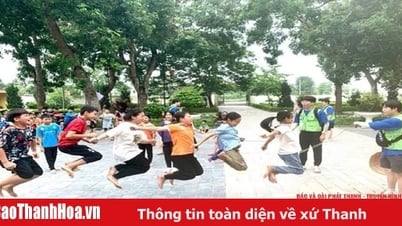











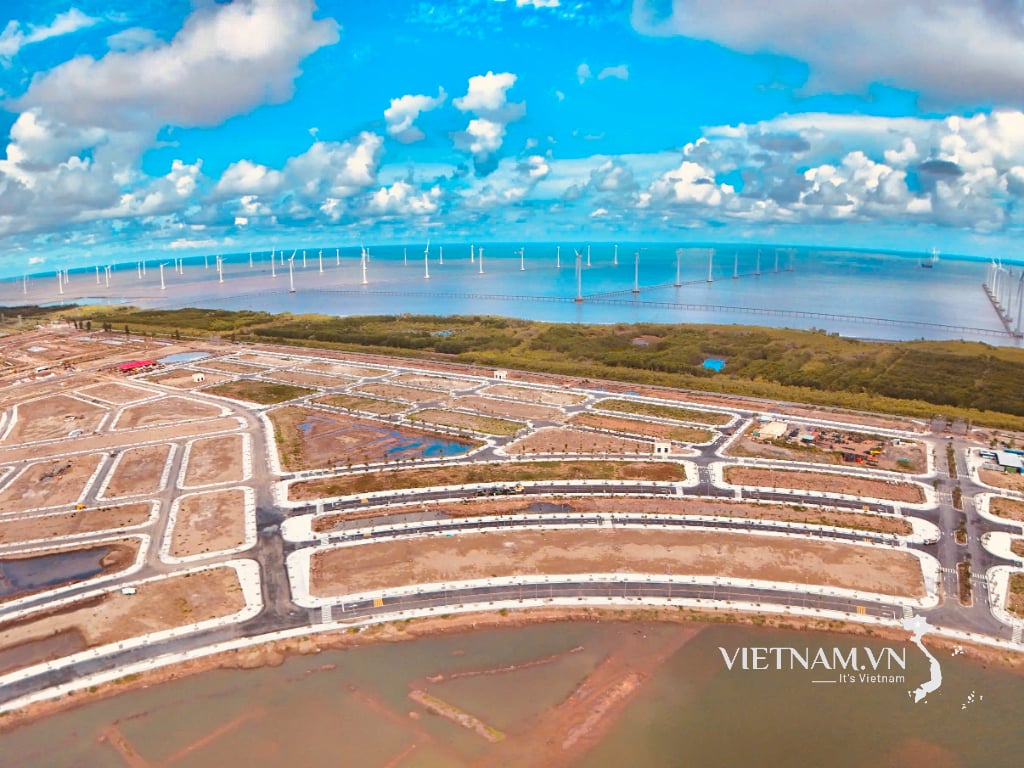



Comment (0)